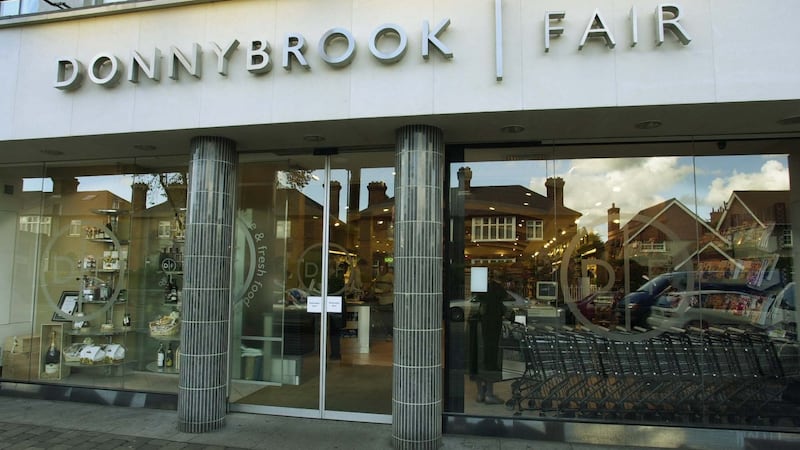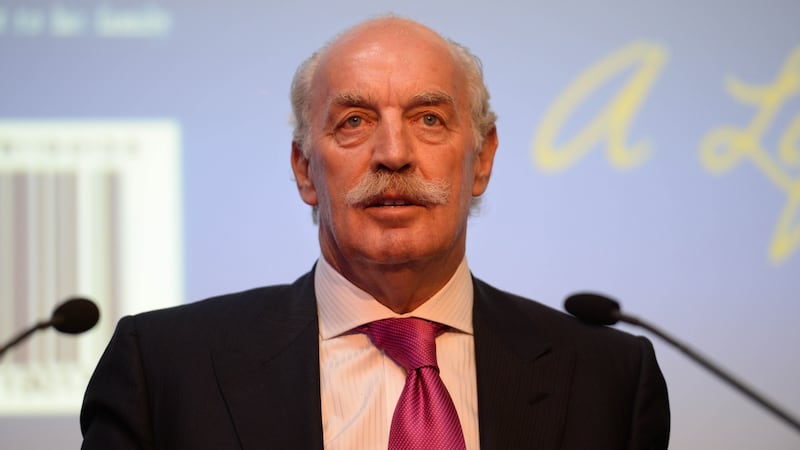If State policymakers botch their handling of the groundswell of negativity bubbling up around the ankles of the Dublin Bus network redesign this issue will become the new water charges on wheels. There are enough parallels to signal trouble ahead for the plan, part of the National Transport Authority's €2 billion BusConnects scheme.
Firstly, you have a flawed system in need of overhaul: the existing bus network is as cracked as the city's water pipes. The NTA and its US-based main consultant Jarrett Walker argue the redesign will get more commuters to more places faster.
Next, a revamp is proposed that would puncture the bubble that usually separates policy from daily life: the introduction of bus interchanging for many passengers to get into the city. This means eliminating several existing direct routes in favour of more “orbital” routes around the city that intersect with frequent city “spine” services. This is as meaningful a change to some commuters’ lives as proposing to charge them to fill their kettle for their morning brew. This hyper-local impact is also what is most frightening for elected politicians, who are beginning to get skittish.
And just like the successful campaign against water charges, a highly motivated swathe of opposition is now emerging that could drown out support for the redesign.
Michael O’Leary, the Mourinho of aviation, isn’t so special anymore
Caveat: From soft landings to strategic tie-ups, business is a world of total nonsense
Forget Lehman, imagine if Anglo had a 10-year reunion over cocktails?
Paddy Cosgrave isn’t guilty of facilitating fascist views – it was just naivety
Much of that resistance is ideological: trade unionists who want to scupper it, allied with hard-left politicians who see an opportunity to give the State a punch in the face. Yet many of the local concerns over the bus network redesign are entirely legitimate and reasonable. The elderly and disabled, for example, will be disproportionately affected by a culture switch to interchanging buses.
How the NTA tailors its handling of these different camps – the phalanx of recalcitrant ideologues versus locals worried about losing out – may determine the fate of the redesign.
Responsible policymakers must do better than simply telling the losers in the plan to suck it up
Winners and losers
There are winners from the plan, and there are losers. Responsible policymakers must do better than simply telling the losers to suck it up or, as the NTA has done, vaguely promising to look at their concerns later once their leverage is gone. The concerns should have been anticipated before the public consultation, which ends next Friday, September 28th.
Many areas will gain, but Enniskerry, just over the Wicklow border from Dublin, is prominent among the communities that stand to lose the most. They say all politics is local. In a way, so are all newspaper stories. I grew up near Enniskerry village, from where the Wicklow mountains rise. This has given me a life-long appreciation of flat land, but also an insight into why the locals are so enraged by the proposed redesign.
Enniskerry currently has the 185 bus, which runs from the surrounds of the village to Bray, where many work or go to school, and the 44, a direct connection to Dublin city, which then meanders north to Dublin City University. Shane Ross, Minister for Transport and Man of the People, once famously tweeted a grinning picture of himself on the 44 after being appointed to Cabinet. The 44, which starts 100 yards from his house, is also popular with tourists visiting Enniskerry and Powerscourt estate.
Under the NTA's proposals, both routes will be scrapped, replaced by a single new 213 route running between Bray and University College Dublin south of the city, where you would transfer to another bus to the city. This route would inexplicably deviate into Enniskerry village on the way to UCD.
No sane person would travel from Bray towards UCD via Enniskerry. It looks like a Frankenstein route, a token sop to placate a village that is having its two existing services merged and decimated.
Abandoned
Most worryingly for local residents, large tracts of Enniskerry currently serviced by the 185 will, under current proposals, be abandoned altogether. This is despite the fact that those areas are pencilled in for major housing development by the local authorities, a fact that seems to have escaped NTA planners.
Wicklow is one of the hilliest counties in Ireland, and Enniskerry one of the most undulating spots in Co Wicklow. The areas that are being abandoned by the NTA – dismissed by it as "rural" but which in reality are becoming almost as suburban as many parts of outer Dublin – are up long, steep hills from the village.
One of those hills, Kilgarron, which runs about a kilometre out of the village towards a housing estate that now will have no bus service has a gradient of up to 17 per cent. That is steeper than the Alpe d'Huez, the notorious hill climb in the Tour de France.
I used to walk, nee climb, that monstrosity twice a day to go to primary school. I’m surprised one of my legs isn’t shorter than the other because of it. How are elderly and infirm people expected to get to the 213 from those areas? Forward roll down the hill?
In its consultation document the NTA gives a vague promise to look later at the clear deficiencies in the plan for Enniskerry. But the consultation is happening now. Why weren’t full alternatives presented in the plan? How can locals fully engage with a consultation that hasn’t properly engaged with their obvious issues?
Such bone-headed oversights explain why Enniskerry, normally a genteel place, has set up a vocal protest group. Different areas across the Dublin region will have their own local issues. The NTA will have to show it is at least open to addressing those issues or the noise around BusConnects will grow louder.
Painful headaches
If such issues are not addressed they will turn into painful headaches for policymakers. Politicians hate local headaches, which is why TD after TD stood up in the Dáil on Wednesday afternoon to express concern about the bus plan.
Expert urban planners appear to agree the NTA plan is, on the whole, broadly progressive. But those on the margins will take the most convincing.
Jarrett Walker – who has defended the plan on Twitter in the face of some unsavoury personal attacks from opponents who want just the whole thing scrapped and not improved – has suggested the redesign will only remain viable if no more than 15 per cent of it is adjusted. That’s a high bar to scale.
The Dáil has just voted two-to-one not to back the plan, although that is far from the end of it just yet. But the political mood music doesn’t sound good for BusConnects.

FOOTNOTES
An ode to Donnybrook Fair
– Speaking of mood music, the rumour sweeping the grocery industry is that Musgrave, which owns SuperValu, is writing a love song for Donnybrook Fair, a Dublin-focused upscale chain of six supermarkets that appears to be on the blocks.
There is no guarantee a deal will happen – Dunnes Stores thought it was on course for an agreement recently with Donnybrook Fair's owners Joe and Mary Doyle only for it to fall down at the eleventh hour – but if Musgrave has a chance of making the acquisition it should push hard.
SuperValu, which is strong around the rest of the country, has always had far too small of a presence in Dublin. Its 2011 capture of Superquinn partially addressed this deficiency. Although that deal was done in a downturn, the decision ultimately proved a strategic triumph given how well those stores are now performing for Musgrave.
But while the capital’s economy has expanded hugely since 2011, SuperValu’s footprint in the city hasn’t. It needs to go again.
Donnybrook Fair, which is embedded in well-to-do city areas that Musgrave would like to reach, could be a golden opportunity for the Cork-based group. Given the shortage of suitable development sites in Dublin, it doesn’t have many other options.

Desmond’s long bet
– Dermot Desmond's stake-building in Mountain Province Diamonds (MPD) – this week he went from below 25 per cent to 28 per cent – is more likely a statement that he sees value in its lumbering share price than an indicator he will go for full control. He doesn't need to buy the lot. He already has enough influence over MPD, which has a near half-stake in the Gahcho Kue jewel mine in the Arctic.
As with many of his previous investments, Desmond has made a long bet on the Canadian diamond industry, stretching back to the 1990s. And while he is patient he has shown previously – with London City Airport and other deals – that he will cash in when the time is right. He is a buyer now. But one day he will contemplate selling.












